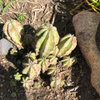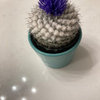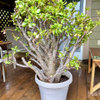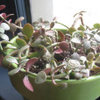Euphorbia caput medusae
brodyjames_gw
13 years ago
I am interested in this plant and have some questions:
1. Is this still the name of this plant?
2. Is there a common name?
3. How common is this plant? Will I be able to find it somewhere?
4. What are your experiences with this plant and what advice can you give?
Thanks everyone!
Nancy




birdsnblooms
land3499
Related Discussions
New Euphorbia
Q
A mixed bag of goodies
Q
Need Help with ID :-/ (Euphorbia) Lost tag! UGH!
Q
What is this?
Q
cactusmcharris, interior BC Z4/5
land3499
amccour
cactusmcharris, interior BC Z4/5
bluebonsai101
brodyjames_gwOriginal Author
cactusmcharris, interior BC Z4/5
brodyjames_gwOriginal Author
land3499
lzrddr
land3499
birdsnblooms
cactusmcharris, interior BC Z4/5
lzrddr
brodyjames_gwOriginal Author
cactusmcharris, interior BC Z4/5
birdsnblooms
brodyjames_gwOriginal Author
birdsnblooms
brodyjames_gwOriginal Author
land3499
cactusmcharris, interior BC Z4/5
lzrddr
birdsnblooms
cactusmcharris, interior BC Z4/5
amccour
birdsnblooms
greenman28 NorCal 7b/8a
land3499
cactusmcharris, interior BC Z4/5
land3499
cactusmcharris, interior BC Z4/5
land3499
stanofh 10a Hayward,Ca S.F. bay area
brodyjames_gwOriginal Author